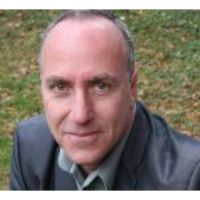
Ivan Amato is a science and technology writer, editor and communicator based in Silver Spring, MD. He is the author of three books--Super Vision: A New View of Nature (2003), Pushing the Horizon: Seventy-five years of high stakes science and technology at the Naval Research Laboratory (1998), and Stuff: the materials the world is made of (1997). An essay series titled “Pathways of Discovery” that he orchestrated for Science magazine in 2002 was repackaged in book form and published in 2002. In 2015, he expects his fifth book, this one on a little known but consequential player in the advent of the Space Age, to come out. And he desperately hopes that his first novel, an historical tale with Antoni von Leeuwenhoek as a main character, eventually will reside someplace other than on his hard drive.
When he has not been working on books, Amato has been writing, editing or managing (sometimes at the same time) for magazines, including Science News, Science, and Chemical & Engineering News. All the while, he has freelanced for publications and organizations ranging from Time, Fortune and the Washington Post, to Science, Nature, and Technology Review, to the President’s Council of Advisors for Science and Technology (PCAST) and the Lemelson Center for the Study of Invention and Innovation. He has done several broadcast stints with National Public Radio and the Discovery Channel for which he once wrote a script for Bill Nye, The Science Guy. Over the years, Amato has won a few awards for his work, mostly for his writings on chemistry, materials and nanotechnology. In May 2011, he started up the quasi-monthly and defiantly live DC Science Café at the local restaurant and cultural hub, Busboys and Poets, to experiment with more direct engagement with the public.
As a journalist-in-residence at KITP, Amato looks forward to participating in a community driven by questions about awe-inspiring phenomena and hopes to leave with a little less ignorance about, among other things, what an electron really is and what the universe would be like if the speed of light was something other than c.

What a great gift it was for the Kavli Institute for Theoretical Physics to offer me a journalist-in-residence gig for nearly three months in early 2014. Science journalists and writers, especially those working independently like me, almost never enjoy the rejuvenating context of a sabbatical, yet that essentially is what KITP made possible. Even though I have been writing about scientists and engineers for many years, I have never had the opportunity to immerse myself in the culture of academic science as deeply as I have during my stay at KITP. I leave the experience brimming with ideas about new stories to tell about scientific discovery and the culture of science.
One of my personal conceptual drivers is that science is part of culture, not apart from it. That accounts for why I became a science communicator. And it led to one of my givebacks to KITP for the residency experience. With the help and support of many KITP scientists, administrators and technical staff, I managed to organize a new channel of public engagement, a science café, by which KITP scientists will be able to share directly with the public the discoveries they have been making about how the world works. Called Café KITP, this ongoing series brings a new cultural offering to downtown Santa Barbara at which locals will be able to, as the café’s tag line promises, “eat, think and be merry.”
We rolled out the first event, titled “Music of the Spheres: the Secret Songs of Stars” at the SoHO Restaurant and Music Club on State Street on April 2. More than 100 attendees learned from one of KITP’s own, Matteo Cantiello, much that they did not know about the stars above while also enjoying friends, good food, and the night's theme drink, “Beetlejuice.” It pleases me to no end that the KITP web site now has a Café KITP icon on the landing page. It is my hope that whenever I return to Santa Barbara, I will be able to click on that icon and find out about the next Café KITP event.
One of my great daily pleasures during my residency was to arrive at Kohn Hall, KITP’s gorgeous home on the gorgeous UCSB campus, and peruse the menu of the day’s talks posted on the bulletin board near the building’s entrance. I could tell just from the often hieroglyphic titles that most of the talks would be beyond my ability to understand them. But my attendance at many of these now seems akin to a welcomed experience of wandering around a scientific bazaar, stopping here and there at this or that booth (The Grid Cells and Spatial Representation Booth, the Nonperturbative Quantum Field Theory Booth, etc.), and absorbing just a bit about the craft and expertise that each booth embodies.
And then there were the individuals with whom I managed to develop relationships that went beyond cursory hallway greetings. It was such a pleasure to mine the brilliant and hungry minds of the Institute’s own top-tier scientists as well as those of scientists from around the world who were participating in the programs. I suspect that some of these new acquaintances will grow into longer-term connections.
Finally, I want to thank the staff members of KITP who work so hard and relentlessly to make the KITP experience superb for visitors like me. It was evident to me that one of the most anticipated parts of the KITP routine for program participants are the afternoon “refreshments” gatherings. My office was near the Founders Room where many of these gatherings were held. I soon learned that moments after the front office sent the daily e-mail announcement for the day’s midafternoon gathering I would hear the footfalls of dozens of scientists rushing toward the cookies and coffee but even more urgently toward the uplifting camaraderie of their intellectual partners at KITP.